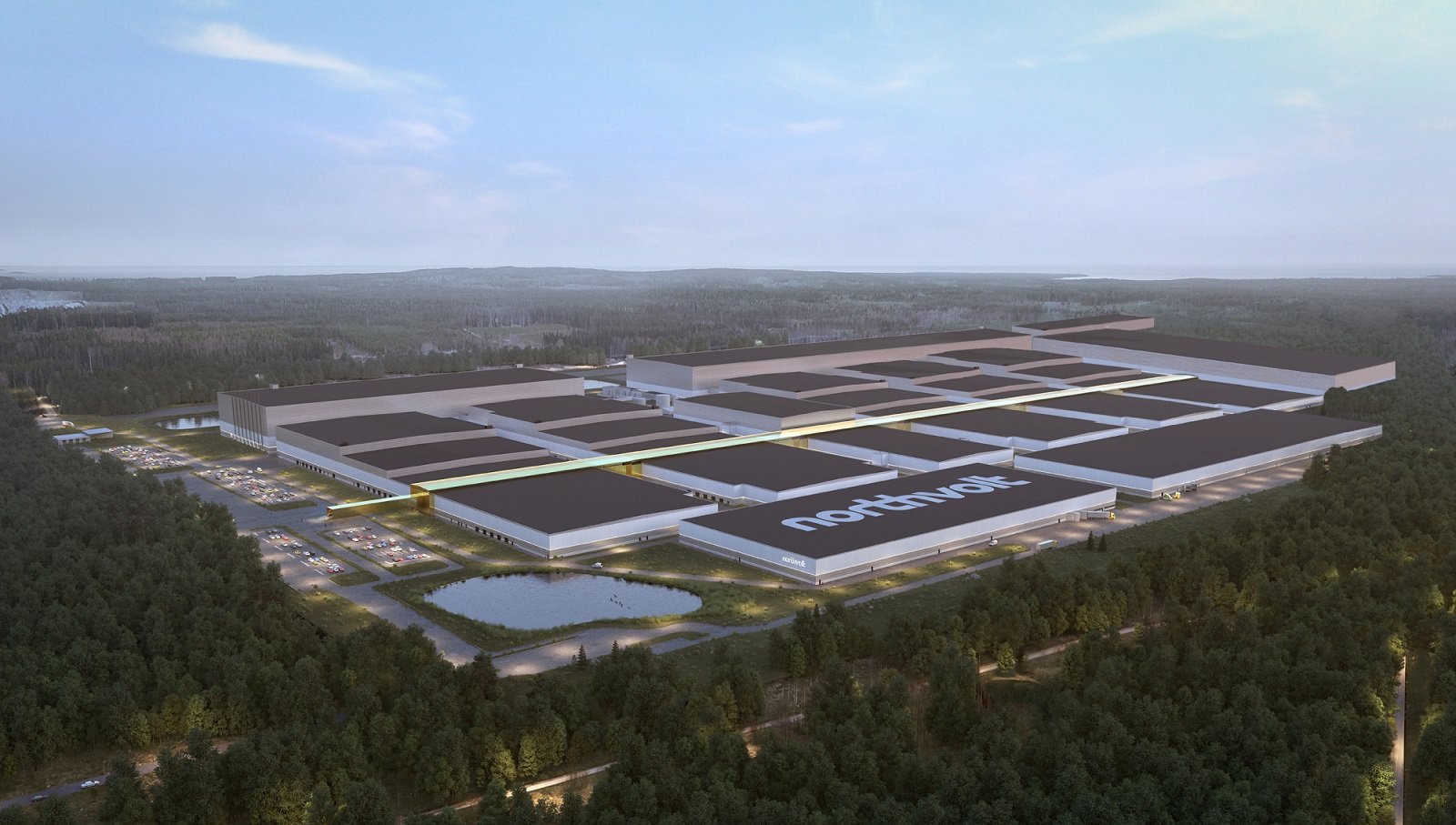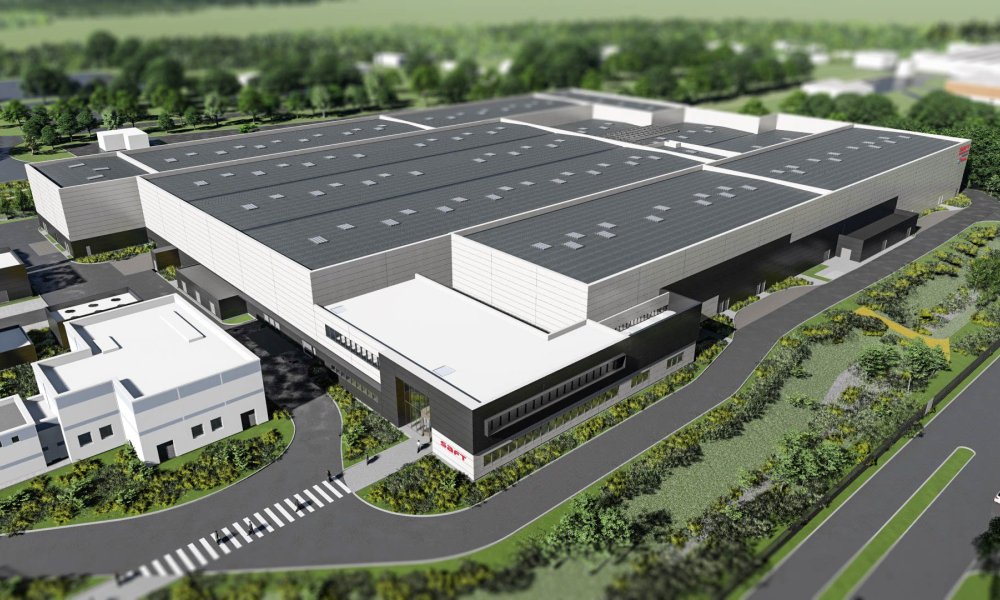This is the first in a series of GTM Squared articles looking at the companies poised to manufacture the building blocks of European climate action, from leveraging innovation in solar to scaling successes in wind turbines. We’ll talk to the business leaders charged with delivering a net-zero economy by 2050. In this first installment, we explore the booming energy storage sector.
***
Europe is plotting an energy storage revolution, and nobody wants to import their revolutions.
Low-carbon infrastructure is garnering more attention than ever in Europe's corridors of power as governments set out plans to tackle the challenges of climate change and the economic downturn. Energy storage has emerged as a high-priority strategic focus, with the dual aims of electrifying transportation and modernizing the grid.
Europe is expected to install just shy of 89 gigawatts of stationary energy storage by 2040 as it looks to balance hundreds of gigawatts of new wind and solar capacity. At the same time, Europe's powerful automotive lobby wants to avoid becoming reliant on imported batteries for electric vehicles, helping to put storage high on the to-do list for recently chosen leaders in the European Commission and the U.K.
The EU’s 2050 economywide net-zero carbon target will require enormous changes in how people fuel their journeys on land, over the sea and in the air. Phaseout deadlines for new fossil fuel cars start in 2025 in Norway and run to 2030 in the Netherlands and to 2040 in France, with more in the works.
Europe's lithium-ion cell manufacturing sector has been relatively slow to get going. Just 10 percent of the world's battery production capacity was located in Europe in 2019, compared to Asia-Pacific's 75 percent, according to Wood Mackenzie data. But things are changing quickly.
Incumbent battery makers like France's Saft are racing to scale up, and startups like Sweden's Northvolt are investing huge sums of money to get ready for the opportunity ahead. Foreign producers such as LG Chem and CATL are expanding on European soil.
Many companies had notions to build factories in Europe, but some of those plans are now actually in motion. "We are seeing more investments to start actually laying the groundwork," said Mitalee Gupta, senior energy storage analyst at Wood Mackenzie Power & Renewables.
By 2026, Wood Mackenzie expects Europe's share of the world's lithium-ion cell factories to triple to 30 percent. With global production capacity expected to hit 1 terawatt-hour by then, that puts Europe on track to have factories capable of cranking out 300 gigawatt-hours in just six years, compared to its 4.5 gigawatt-hours of capacity today, according to the European Commission.
 A rendering of Northvolt Ett, the company's first gigafactory, currently under construction in Sweden. (Credit: Northvolt)
A rendering of Northvolt Ett, the company's first gigafactory, currently under construction in Sweden. (Credit: Northvolt)
Northvolt's Gigafactories for a local supply chain
Northvolt is among Europe's most ambitious battery startups. The company is building the first of two planned gigafactories, having already invested €200 million ($225 million) in its research labs and a pilot manufacturing line. The Northvolt Ett gigafactory in northern Sweden will have an initial capacity of 16 gigawatt-hours with the potential to ramp up to 40 gigawatt-hours. Northvolt Zwei in Germany is in preconstruction development.
Northvolt CEO Peter Carlsson co-founded the company with Paolo Cerruti after spending five years as vice president of supply chain at Tesla Motors. Carlsson saw that Europe needed to transform its transport and power sectors away from fossil fuels, requiring "a massive amount of energy storage."
At the same time, Europe had a "fairly nonexistent supply chain," which "created a very interesting market dynamic,” Carlsson told Greentech Media.
Carlsson was convinced that European manufacturers could compete with Asia's dominant players. Northvolt's first major financing round, an equity capital raise, announced in June 2020, raised €900 million for development of Northvolt Ett.* It has received support from a range of powerful companies, including ABB, Siemens and Volkswagen. The European Investment Bank (EIB), which bankrolls projects aligned to the EU’s policy objectives, has also supported the company.
“This is not another startup: this is a real industrial project with huge backing overall,” Carlsson says, adding that no single partnership has been make or break for the company.
Carlsson seems relaxed about competition from Asian battery makers. Then again, Carlsson seems pretty relaxed about everything. During one five-minute Tesla performance review, Elon Musk’s only criticism was that Carlsson should talk faster.
Northvolt is convinced that the global battery supply chain will be regionalized, in large part due to the weight of EV batteries, at half a ton each. “Having such vital components sitting across oceans with long lead times is not going to fit with the auto industries' ‘just-in-time’ manufacturing approach," Carlsson says.
The localization trend is accelerating in battery manufacturing, says WoodMac's Gupta. “We were seeing some movement toward localized supply chains before the pandemic. The coronavirus outbreak has only increased scrutiny of global supply chains."
Northvolt is also pressing its green credentials hard, a big differentiator from some foreign competitors. With Europe introducing a carbon border adjustment tax, it could also be a big advantage.
Northvolt estimates that its hydro-powered Northvolt Ett facility will have an electricity cost one-fifth that of a Chinese competitor. State-owned hydro giant Vattenfall was another early partner for Northvolt. One EV battery in a coal-powered facility would lock in 2 to 3 tons of CO2 equivalent, compared to nothing at Northvolt Ett, the company says.
Europe's coming wave of new renewable energy capacity, potentially including hundreds of gigawatts of offshore wind, could help collapse power costs in other countries without Scandinavia's hydroelectric bounty.
With an eye to further burnishing its green credentials, Northvolt is also developing its own pilot recycling processes. It hopes to prove that recycling battery materials on a gigawatt-scale will be cheaper than buying new every time. By 2030 it wants half of the raw materials going into its new batteries to have been recycled from old ones.
Rival startups including Freyr in Norway and BritishVolt in the U.K. hope to have their own gigafactories up and running by 2023. The U.K. government has talked a good game on support for full-scale battery manufacturing. In June, Elon Musk was rumored to have been in Britain assessing land for a potential Tesla battery factory. The company’s Giga Berlin facility, under construction and due to open in 2021, will be focused on car assembly.

Saft and PSA Group could eventually build gigafactories in France and Germany. (Credit: Saft)
Another route: Combining expertise and imports
Startups are not having all the fun, however. France’s Saft has been making specialty batteries for shipping, aviation, defense and other sectors for a century. Following its 2016 acquisition by oil major Total, Saft is now preparing for significant growth focused on demand from EVs.
A joint research program with automaker Groupe PSA — behind the brands Opel, Peugeot and Citroën — could scale up over the course of the next decade to include two 24 gigawatt-hour factories, one in France, the other in Germany.
In the meantime, Saft is already serving the stationary battery market, using cells from China to keep costs down. A deal signed in 2019 with Tianneng Energy Technology for Chinese cells was an attempt to “identify where we can leverage cost and where we can maximize value," says Sébastien Hita Perona, general manager of Saft’s energy storage solutions segment.
Using imported cells, Saft "adds the value” at its factories in Jacksonville, Florida and Toulouse, France, Hita Perona says, integrating transformers, power conversion systems and remote management systems.
Saft can tweak the battery chemistry based on a client's final use case and add the sophistication required to control a battery that wants to play in spot energy markets. Prices for batteries may be falling 8 to 10 percent annually, says Hita Perona, but finished systems are never going to go down the commodity route.
Saft's approach is fairly common for European battery vendors given the current absence of substantial domestic cell supply, WoodMac's Gupta notes.
“The Asian firms have been serving the global market for a while and have achieved economies of scale. The Europeans need to ramp as quickly as possible to bring costs down,” she says. “But one area where the European firms have a head start is perhaps with advanced lithium-ion technology such as solid-state batteries. A lot of EU investment has gone into R&D, so if those could be pushed to commercial viability, it would really give the European manufacturers a head start.”
Local technology, outsourced manufacturing
Energy storage is not exclusively about lithium-ion batteries, of course. It’s not even exclusively about power.
Heating accounts for almost half of all energy demand in Europe, making it a vital piece of the net-zero challenge. Heating is often overlooked by the power sector, where decarbonization is easier. There's a big opportunity in storing cheap electricity when it's plentiful and using it at times when hot water and heating are in high demand.
One company working in that space is Sunamp, based in Scotland. Sunamp's technology stores heat in a phase-change material. A traditional gas boiler and hot water tank can be replaced by a heat pump paired with a thermal battery. The company has quietly built up a substantial number of patents, successful trials and deployments over the last decade. The earliest trials for the first generation of its thermal batteries saw average residential customers halve their hot water and heating bills. It has thousands of installs in the U.K. already and agreements in place that will add substantial numbers in China and Europe too.
Sunamp says it can make around 20,000 of its batteries a year from its factory outside Edinburgh. But the company is looking to take a different path than manufacturers like Northvolt or Saft: licensing its technology to other manufacturers.
Scale, speed and urgency mean that using other manufacturers to make its thermal batteries could be the more effective route to deployment, says Andrew Bissell, CEO of Sunamp. One manufacturer, China’s Gomon, has been named publicly; the others have not yet been revealed.
Energy storage technology is advancing rapidly and demand is set to swell. Europe's ability to meet that growing demand through its own technologies and manufacturers will depend in part on policymakers clearing obstacles and greasing the wheels for local factories.
Even before the desperate need for job creation caused by the pandemic, this was happening across Europe, and the recent changing of the guard at the European Commission looks set to help.
"Things were moving in this direction already," says Northvolt's Carlsson. "The new [European Commission] leadership has added some meat to the bones. They've revitalized efforts, and things are being driven forward with a lot of energy."
Correction: The article originally said Northvolt had raised $13 billion to be spent through 2030. That figure was incorrect.
***
The European Commission has set out along the road to achieving a climate-neutral economy by 2050. But where do the opportunities lie, and which technologies are poised to benefit?
Wood Mackenzie has launched a European Green Deal guide to help businesses understand how the European Green Deal will shape the future energy market and evaluate the potential new opportunities. Click here to find out more.